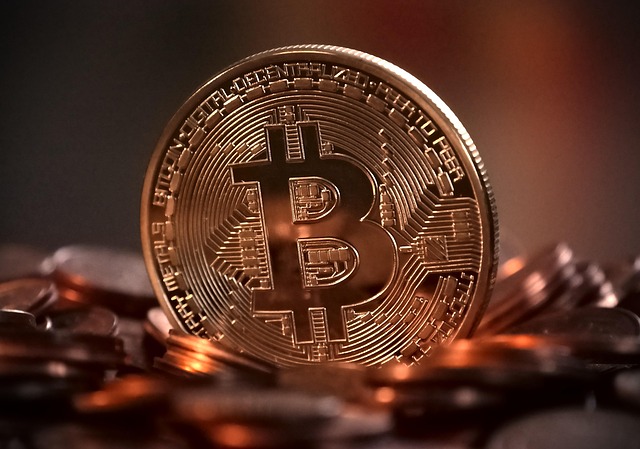Nous Research secures $50M from Paradigm to build decentralized AI on Solana
Decentralized AI startup Nous Research has raised $50 million in a Series A round led by crypto venture giant Paradigm, marking one of the largest investments at the intersection of blockchain and artificial intelligence to date.According to an April 25 report from Fortune, the funding round values Nous at a $1 billion token valuation. Previous investors include Distributed Global, North Island Ventures, and Delphi Digital, who contributed to Nous’s earlier $20 million seed rounds.Operating since 2022, Nous Research is stepping into the spotlight with the latest fundraising to develop open-source AI models powered by decentralized infrastructure.The company leverages the Solana blockchain to coordinate and incentivize global participation in training its AI models, aiming to challenge centralized giants like OpenAI and DeepSeek.Nous Research announcing Nous Psyche on Solana. Source: Nous ResearchRelated: Angels from Citadel, Jane Street, JPMorgan back $20M raise for Theo networkNous harnesses global idle compute power for AI trainingFounded by AI researchers, including collaborators like Diederik Kingma (co-inventor of the Adam optimizer), Nous is taking a different approach from typical crypto-AI projects.Instead of relying on centralized data centers, it enables individuals worldwide to contribute idle computing power for AI training.Blockchain technology underpins this model, ensuring secure, incentivized participation while mitigating risks like data poisoning through features such as Byzantine fault tolerance.“We very much came from a mentality that we want to create and serve the world’s best AI,” co-founder Karan Malhotra told Fortune.Per the report, the 20-person team at Nous Research will allocate much of the new capital toward scaling compute resources and advancing research.In December 2024, Nous told Venture Beat that it is pre-training a 15-billion-parameter LLM in a decentralized manner, livestreaming progress to showcase transparency and performance.Meanwhile, Paradigm’s backing signals a deepening interest in AI within crypto venture circles.“This open, community-oriented approach is a powerful contrast to the closed, centralized efforts from incumbent labs,” Paradigm partner Arjun Balaji reportedly told the outlet.Related: Crypto users cool with AI dabbling with their portfolios: SurveyParadigm becomes top-performing crypto VCParadigm is one of the biggest and most successful crypto venture capital firms.In March, Web3 data platform Kaito AI ranked Paradigm as the top-performing crypto VC over the past year, posting an impressive 11.80% performance metric, outperforming other major players like Alliance (10.64%), Dragonfly (8.32%), a16z (6.94%) and Multicoin Capital (5.86%).Source: RoryFounded by Coinbase’s Fred Ehrsam and ex-Sequoia partner Matt Huang, Paradigm has built a strong reputation for spotting high-potential crypto projects early.Its portfolio includes leading DeFi platforms like Uniswap (UNI) and dYdX, as well as consistent backing for Ethereum scaling solutions such as Optimism.Paradigm also led a $255 million round for StarkNet, a key player in zero-knowledge rollup technology.Magazine: Stablecoin for cyber-scammers launches, Sony L2 drama: Asia Express
Ethereum devs test a 4x increase in gas limit for Fusaka hard fork
Ethereum core developers are considering a four times increase in the layer 1 gas limit as one of the key features for the next hard fork after Pectra, known as Fusaka.The devs are proposing to test a raise in Ethereum’s gas limit to 150 million by the Fusaka hard fork, according to Ethereum Improvement Proposal (EIP) 9678, introduced on April 23 by Sophia Gold, a developer on the protocol support team at the Ethereum Foundation. During the last All Core Devs Execution (ACDE) meeting, there were discussions to make the gas limit increase a “key feature” of Fusaka, Ethereum core developer Tim Beiko said in an April 24 meeting summary. “To align on client defaults and keep this as a priority, we’ve drafted an EIP. It’s a bit unconventional, but not unprecedented (see EIP-7840). We plan to get it merged early next week and formally SFI it on the next ACDE,” Beiko said. “As we continue this work, we expect to identify changes that need to be made in-protocol to support a higher gas limit. This implies adding more EIPs to Fusaka, even though the fork scope is final.”Source: Tim BeikoThe next Ethereum upgrade, Pectra, is scheduled to go live on the mainnet in May. Fusaka has been flagged as possibly going online in late 2025.Gas limit increase a priority ahead of FusakaAs part of the motivation for increasing the gas limit, the developers said there was great interest in scaling layer 1 execution and that it could likely be done by implementing any new features.However, it requires guidance from execution layer developers because “we expect to find bugs in clients at higher gas limits than currently used on mainnet,” which will “require time from client developers both to test and to fix any bugs that arise, therefore it makes sense to include as an EIP in a hard fork to commit to this.”The developers behind the EIP say client developers will need time to test and fix any bugs that arise while increasing the gas limit. Source: GitHub“While the gas limit is ultimately set by validators, we agreed that having an EIP to coordinate client defaults would help keep this a priority and ensure all clients update their defaults by the time Fusaka goes live,” Beiko said.Related: Vitalik Buterin says the app layer needs ‘good social philosophy’ mostThe average Ethereum gas limit was around 30 million after increasing in August 2021, according to data on Ycharts. Validators supported raising the network’s gas limit on Feb. 4, increasing the maximum amount of gas used for transactions in a single Ethereum block. It’s just under 36 million at the moment, Ycharts data shows. Magazine: Ethereum is destroying the competition in the $16.1T TradFi tokenization race
ARK Invest ups its 2030 Bitcoin bull case prediction to $2.4M
Billion-dollar asset manager ARK Invest has raised its “bull case” Bitcoin price target from $1.5 million to $2.4 million by the end of 2030, driven largely by institutional investors and Bitcoin’s increasing acceptance as “digital gold.”ARK’s “bear” and “base” case scenarios for the price of Bitcoin (BTC) were also bumped up to $500,000 and $1.2 million, ARK research analyst David Puell said in an April 24 report.The new bear and base targets were bumped up from ARK’s $300,000 and $710,000 Bitcoin price predictions on Feb. 11.ARK’s price projections were modeled on Bitcoin’s total addressable market (TAM), penetration rate — the percentage of Bitcoin’s TAM that it could capture in certain cases — and Bitcoin’s supply schedule.ARK’s bear, base and bull case price targets for Bitcoin by Dec. 31, 2030. Source: ARK Invest“Institutional investment contributes the most to our bull case,” said Puell, who estimated that Bitcoin would achieve a 6.5% penetration rate into the $200 trillion financial market in a best-case scenario (that figure excludes gold).Bitcoin’s acceptance as “digital gold” was also a major contributor to the lofty estimate, with Puell estimating that it could capture up to 60% of gold’s $18 trillion market cap (2024 figures) by the end of 2030 in a bull scenario.Bitcoin becoming a “safe haven” in emerging markets was the third-largest contributor to ARK’s $2.4 million bull case prediction at 13.5%.“This Bitcoin use case has the greatest potential for capital accrual,” Puell said, pointing to Bitcoin’s ability to protect wealth from inflation and devaluation in developing countries.Nation-state and corporate Bitcoin treasury strategies and Bitcoin financial services were also factored into ARK’s Bitcoin price projections.Bitcoin use cases contributing to ARK’s Bitcoin price targets. Source: ARK InvestARK’s Bitcoin predictions are boldA $2.4 million Bitcoin price tag would send Bitcoin’s market cap to $49.2 trillion, assuming that Bitcoin’s total supply will have reached 20.5 million by the end of 2030.A $49.2 trillion valuation would be almost larger than the current gross domestic products of the US and China combined.It would also put Bitcoin in a good position to overtake gold as the world’s largest asset, which currently boasts a market cap of $22.5 trillion.Related: Cathie Wood to kick off El Salvador’s AI public education programEven ARK’s bear and base targets of $500,000 and $1.2 million would mean Bitcoin needs to increase at a compounded annual growth rate of 32% and 53% by the end of 2030 — a return that isn’t achieved too often for assets that have already notched trillion-dollar valuations.Since then, Bitcoin has recovered from a 2025 low of $75,160, soaring back up to the $94,000 range, while the Trump administration established a Strategic Bitcoin Reserve.Magazine: Ethereum maxis should become ‘assholes’ to win TradFi tokenization race
Ethereum sees record single-day inflow with 449K ETH in accumulation addresses
Key Takeaways:Ethereum saw a record 449,000 in ETH inflows to accumulation addresses on April 22.Active addresses rose 10%, signaling growing network engagement, but DeFi activity remains weak with declining DEX volumes.Holders in accumulation addresses remain underwater with a realized price of $1,981. Over the past 10 days, Ethereum inflows into accumulation addresses reached their highest levels since 2018. On April 22, a record-breaking 449,000 Ether (ETH), valued at an average price of $1,750, flowed into these addresses, marking the most significant single-day inflow in Ethereum’s history. This surge suggests that long-term holders remain optimistic about Ethereum’s future, despite recent price declines. Ethereum inflows into accumulation addresses. Source: CryptoQuantHowever, the realized price for these accumulation addresses is $1,981, meaning these holders are currently at a loss, as the current market price is below this level. Notably, the realized price had been below Ethereum’s market price since 2018, only recently surpassing it, indicating a shift in holder dynamics.Ethereum realized price for accumulation addresses. Source: CryptoQuantEthereum’s onchain activity has also shown positive momentum over the past few days. Between April 20 and 22, active addresses on the network rose by 10%, from 306,211 to 336,366. This increase and upward price movement signal growing network engagement and bullish sentiment. Yet, decentralized finance (DeFi) activity remains subdued. Data from DefiLlama indicates that decentralized exchange (DEX) volumes are declining, with transactions holding steady at a weekly average of approximately 1.3 million, suggesting limited DeFi momentum.Ethereum DEXs’ volume and transactions. Source: DefiLlamaRelated: Ethereum bounces back as market dominance recovers from all-time lowEthereum faces key resistance at $1,895According to the Cost Basis Distribution (CBD) heatmap for Ethereum, a significant supply concentration is highlighted at $1,895.50, where 1.64 million ETH is held by investors who bought during November 2024. This level, identified as a potential resistance, could see selling pressure as holders might attempt to break even or lock in profits. Based on a technical analysis, the resistance at $1,895 receives further confirmation. The price hovers near the daily chart’s 50-day exponential moving average (EMA), a critical trend reversal indicator. A failure to break above this EMA could signal further bearish momentum, while a sustained move higher might offer hope for bulls.Ethereum 1-day chart. Source: Cointelegraph/TradingViewDespite this, Ethereum remains in a clear downtrend on higher time frame charts, with no definitive signs of a bullish reversal. A daily close above $2,142 is essential to spark a potential recovery, breaking the pattern of lower highs and lower lows. However, anonymous trader Rektproof warns of an emerging bearish fractal—a repeating price pattern that previously led to declines. This suggests Ethereum could face another rejection and drop below $1,400 if the markets start trending down again. Ethereum analysis by RektProof. Source: X.comRelated: Institutions break up with Ethereum but keep ETH on the hookThis article does not contain investment advice or recommendations. Every investment and trading move involves risk, and readers should conduct their own research when making a decision.
Serbia’s Prince Filip says Bitcoin is being stifled, expects huge rally
Bitcoin’s price trajectory may be suppressed ahead of its upcoming “omega candle” rally, according to Prince Filip Karađorđević, the hereditary prince of Serbia and Yugoslavia.In an April 24 interview with Simply Bitcoin, Filip said some market participants may be limiting Bitcoin (BTC) price action.“People are able to control the market to some extent,” he said. “Maybe that’s what acted on the 2021 market that suppressed its price from jumping high up. We could get that again in 2025, but there will be one point where [Bitcoin price] will run away.”Filip added that Bitcoin remains a fundamentally deflationary asset and said its value is “always going to rise over time.”Source: Simply BitcoinHe referenced the concept of the “omega candle,” made popular by Bitcoin advocate and Jan3 CEO Samson Mow. The theory predicts Bitcoin’s growth trajectory will explode after it hits the $100,000 mark.Related: Bitcoin acting ‘less Nasdaq,’ more like gold, despite 60% recession odds“You’ll start to go up by 10,000 a day or drop by 10,000 a day. And this is the God candle. After that, we’ll start to see omega candles, which are 100,000 increments daily,” said Mow in an exclusive interview with Cointelegraph in November 2024.Factors contributing to Bitcoin’s growth include the growing distrust in the traditional financial system, according to Mow.Related: Bitcoin ETFs log $912M inflows in ‘dramatic’ investor sentiment boostETF inflows, macro relief drive momentumBitcoin price saw an over 9% recovery over the past week as the US spot Bitcoin exchange-traded funds (ETFs) accumulated over $2.2 billion worth of Bitcoin in the three days leading up to April 23, Farside Investors’ data shows.Source: Farside InvestorsThe price action is in line “with our Bitcoin relative strength expectations with respect to equities and the dollar,” analysts from Bitfinex exchange told Cointelegraph, adding:“Bitcoin is rallying due to a combination of macro relief, strong ETF inflows, and growing expectations that the Fed will maintain policy flexibility amid softening economic data.”Bitcoin may continue to see more upside if “equities continue higher during earnings week,” but the “still-elevated macro uncertainty could limit broad-based upside,” the analysts added.Stock and cryptocurrency investors are also concerned about a potential recession in the US. JPMorgan estimates a 60% probability for a recession in 2025, citing US President Donald Trump’s 145% tariffs on China as a “material threat to growth” that increases the odds of an economic downturn.Magazine: Bitcoin’s odds of June highs, SOL’s $485M outflows, and more: Hodler’s Digest, March 2 – 8
Shaquille O’Neal reaches settlement in FTX lawsuit, terms remain secret
Shaquille O’Neal has settled with investors who claim losses from the collapse of cryptocurrency exchange FTX, according to an April 23 filing in the US District Court for the Southern District of Florida.The settlement amount remains confidential, with terms expected to be disclosed after investors formally request preliminary court approval, according to court documents.O’Neal and other celebrities and athletes were accused of promoting FTX and allegedly contributing to investor losses by endorsing the now-bankrupt exchange.Source: Court ListenerThe case is part of a broader multidistrict litigation effort, where investors are seeking up to $21 billion in damages from FTX insiders, advisers and promoters, far exceeding the $9.2 billion available through bankruptcy proceedings.Other celebrities embroiled in similar legal troubles for their roles in FTX include NFL quarterback Tom Brady, supermodel Gisele Bündchen, billionaire investor Kevin O’Leary, former NBA player Udonis Haslem, David Ortiz, Naomi Osaka and others. Notably, FTX investors faced challenges in serving O’Neal with legal papers during the early stages of the lawsuit over his promotion of the collapsed exchange.Lawyers representing the victims described O’Neal as “running from the lawsuit,” after multiple failed attempts to deliver court documents. Legal teams reportedly spent months trying to reach the NBA legend, resorting to creative methods, including attempting service during NBA games and at his residences. Related: FTX former execs and promoters to settle class-action lawsuit for $1.3MO’Neal finalizes $11 million settlement over Astrals NFT projectThe settlement with FTX investors comes as O’Neal recently agreed to pay $11 million to resolve a class-action lawsuit tied to his involvement in the Solana-based Astrals NFT project.In May 2023, O’Neal was served with the Astral NFT lawsuit during an NBA game at Miami’s Kaseya Center, formerly the FTX Arena. The class-action lawsuit involved his promotion of the Astrals NFT project, alleging that the NFTs promoted by O’Neal were unregistered securities.In August 2024, a Miami federal court judge ruled that O’Neal would need to defend some of the claims brought against him in the case. Astrals is a Solana-based project featuring 10,000 NFTs, a metaverse called Astralworld and a decentralized autonomous organization (DAO) with a governance token called Galaxy.Magazine: Ethereum maxis should become ‘assholes’ to win TradFi tokenization race
SOL Strategies raises $500M in convertible notes issuance to buy Solana tokens
SOL Strategies, a Canadian investment company, issued $500 million in convertible notes to buy and stake in Solana (SOL) tokens.The $500 million issuance was made to a singular investor, ATW Partners, a New York-based investment firm. The company provides growth equity and structured capital to companies across public and private markets, a spokesperson for SOL Strategies told Cointelegraph.A spokesperson for SOL Strategies said the company is focused on building institutional-grade infrastructure for Solana, rather than reacting to short-term price volatility.According to an April 23 announcement, the yield generated from staking will accrue back to both SOL Strategies and ATW Partners. SOL Strategies is a publicly traded company listed on the Canadian Securities Exchange. Its share price has risen 25.3% on the day, according to Google Finance.Related: Astra Fintech commits $100M for Solana growth in AsiaSOL Strategies’ share price movement. Source: Google Finance“This investment represents significant institutional confidence in Solana’s long-term potential,” the spokesperson said. “From an ecosystem perspective, we expect several positive impacts. First, by increasing our validator network’s stake, we’ll contribute to greater network security and decentralization.”According to StockAnalysis.com, SOL Strategies posted CAD$10.62 million ($7.65 million) in revenue for 2024, a positive turnaround of CAD$15.65 million ($11.27 million) from 2023, when the company posted a loss.Related: Debate as Solana briefly flips Ethereum in staking market capCompanies move into SolanaSOL Strategies becomes the second publicly traded company to announce a capital raise aimed at purchasing SOL. On April 21, Upexi disclosed a $100 million raise aimed at building a SOL reserve. The DeFi Development Corporation (formerly Janover) also recently announced a $42 million raise and plans to create a Solana reserve treasury. Magazine: Memecoins are ded — But Solana ‘100x better’ despite revenue plunge
Ubisoft taps Immutable to launch Web3 card game ‘Might & Magic: Fates’
Gaming giant Ubisoft has partnered with Web3 firm Immutable to launch Might & Magic: Fates, a blockchain-powered strategy card game set in the Might & Magic universe.According to a news release shared with Cointelegraph, Might & Magic: Fates blends classic strategic gameplay with modern blockchain technology, offering players digital ownership through Immutable’s Web3 infrastructure.The game will launch on iOS and Android. The title introduces fresh mechanics, faction-based strategies and a wide array of legendary heroes and creatures.Players can collect, trade, and customize decks using hundreds of cards, crafting unique strategies in a competitive environment where success is driven by skill and tactical decision-making.Immutable co-founder Robbie Ferguson teases major announcement. Source: Robbie Ferguson“The game is free-to-play with no hard progression barriers. Players advance by collecting cards and in-game currency through gameplay,” Justin Hulog, chief studio officer for Immutable, told Cointelegraph.“Additionally, those looking to speed up their progression or acquire specific cards can do so through marketplaces,” Hulog said.He added that players will have the ability to trade the digital collectible cards they own using dedicated platforms.Related: SEC closes investigation into Immutable nearly 5 months after Wells noticeImmutable to provide blockchain backboneImmutable, a leading Web3 gaming platform, will provide the blockchain backbone for the project.The firm is known for hosting titles like Gods Unchained and Guild of Guardians, both designed to give players true ownership of in-game assets through blockchain technology.Gods Unchained is a free-to-play NFT trading card game where players collect, trade, and battle using unique, player-owned cards. It runs on Immutable’s gas-free layer-2 solution and is transitioning to Immutable zkEVM for enhanced functionality.The card anatomy of Gods Unchained. Source: Gods UnchainedGuild of Guardians is a mobile RPG where players assemble NFT-based teams of heroes to battle in dungeon raids.Ubisoft has been among the few video game publishers that have incorporated crypto elements into their games.Related: How Web3 can change gaming without changing how gamers playIn October 2024, the firm announced the release of its first game incorporating Web3 technology. Dubbed Champions Tactics: Grimoria, the game was deployed on the Oasys layer-2 Home Verse, a blockchain-powered ecosystem for Web3 gaming.Later in December 2024, Ubisoft and the Arbitrum Foundation announced the launch of Captain Laserhawk: The G.A.M.E., a Web3-enabled top-down shooter. The game is set in the Ubisoft gaming universe and features a cast of characters from titles including Far Cry: Blood Dragon, Rayman, Assassin’s Creed, Beyond Good and Evil, The Crew, Rainbow Six, Splinter Cell and Watch Dogs.Magazine: XRP win leaves Ripple and industry with no crypto legal precedent set
$635M liquidated in 24H as trader predicts $100K Bitcoin short squeeze
Crypto markets have faced a wave of liquidations over the past 24 hours, with total losses reaching $635.9 million, according to market data. Most of the liquidations (over $560 million) came from short positions, signaling growing pressure on bearish traders.Bitcoin (BTC) led the liquidation charts, with $293 million in short positions wiped out as BTC surged past $94,000, marking a 6.29% gain within one day, according to CoinGlass data.Ether (ETH) followed, with over $109 million in short liquidations as its price climbed nearly 10% to $1,787.Data from exchanges showed Binance accounted for the largest share of liquidations at $18.7 million in the last four hours, with 78% of that targeting short positions. Bybit and OKX also saw significant liquidation volumes, reflecting widespread volatility across major platforms.Crypto market sees a wave of liquidations. Source: CoinGlassRelated: Bitcoin breaks downtrend with spike toward $92.6K, but who’s behind the price momentum?Trader says Bitcoin liquidity building around $100,000 levelAmid the market turbulence, crypto analyst Mister Crypto noted that liquidity is “piling up around $100,000” for Bitcoin.In a recent post on X, he warned that bears are showing signs of desperation, suggesting a potential short squeeze could drive BTC closer to the six-figure mark.A short squeeze occurs when a rapid price increase forces traders betting against the market to cover their positions, fueling further upward momentum.Mister Crypto also shared a Binance BTC/USDT Liquidation Heatmap, showing that a large amount of Bitcoin trading activity and liquidation orders are building up around the $100,000 level, meaning many traders have set positions that could be triggered if the price reaches that point.Source: Mister CryptoBitcoin surged to a 45-day high above $94,000 on April 23. The leading cryptocurrency was trading at $94,236, up by more than 6% over the past day, at the time of writing, according to data from CoinMarketCap.Related: Bitcoin price prepares for ‘70% to 80%’ gain as onchain metrics and spot BTC ETF inflows spikeNot everyone believes Bitcoin will hit $100,000 soonHowever, not everyone is optimistic about an imminent Bitcoin surge to $100,000.“Bitcoin’s climb to $94K reflects renewed global optimism, but its path to $100K remains uncertain,” Vincent Liu, chief investment officer at Kronos Research, told Cointelegraph.He said the outcome of the May 6 Federal Open Market Committee (FOMC) meeting, ongoing trade negotiations with India and China, and broader macro conditions will be critical. He added:“Cleared tariffs and potential Fed rate cuts could ignite further momentum, while rate hikes or unresolved tensions may keep BTC range-bound. US monetary policy will be pivotal in determining if Bitcoin reaches this milestone.”Magazine: XRP win leaves Ripple and industry with no crypto legal precedent set
SEC says it won’t re-file fraud case against Hex’s Richard Heart
The US Securities and Exchange Commission has said it doesn’t intend to refile its securities fraud complaint against Hex founder Richard Schueler, who goes by Richard Heart.“Plaintiff Securities and Exchange Commission provides this notice that it does not intend to file an amended complaint in this matter,” the regulator’s lawyer, Matthew Gulde, stated in an April 21 letter to New York District Court Judge Carol Bagley Amon. The court had previously dismissed the SEC’s original complaint on Feb. 28 as Judge Amon said the regulator failed to establish that it had jurisdiction over Heart’s activities, which she said were not specifically targeted at US investors.She granted leave for the SEC to file an amended complaint by March 20, later extending the deadline to April 21.Heart posted to X on April 22 that “Richard Heart, PulseChain, PulseX, and HEX have defeated the SEC completely and have achieved regulatory clarity that nearly no other coins have.”Letter from the SEC to Judge Amon. Source: PACERHeart added that the SEC walked away from some of its other cryptocurrency cases voluntarily, but claimed his was the only case where “the SEC lost and crypto won across the board, with a dismissal in court of every single claim the SEC brought.”Heart said it was a victory for open-source software, cryptocurrency and free speech because the SEC “actually sued software code itself in this case.” SEC hunted Heart in FinlandThe SEC sued Heart in July 2023 for alleged unregistered securities offerings of three tokens, HEX, PulseChain (PLS), and PulseX (PSLX), claiming he made more than $1 billion by touting the tokens as a “pathway to grandiose wealth for investors.”In April 2024, Heart tried to have the suit tossed, claiming the regulator “has no sway over him,” because he didn’t reside in the United States. Related: Finnish police seize watches worth $2.6M from Hex founder Richard Heart: ReportThe SEC opposed this in August, claiming he touted the tokens at a Las Vegas event. In December 2024, Interpol issued a Red Notice for Heart, seeking his arrest in Finland, where he was also suspected of tax evasion. The PulseChain native token (HEX) hit an all-time high of $0.031 in December 2024 but has since tanked 76% as most altcoins have failed to follow Bitcoin’s momentum this year. The SEC has dropped or suspended several cases against crypto firms so far this year under the Trump administration.Magazine: Altcoin season to hit in Q2? Mantra’s plan to win trust: Hodler’s Digest










